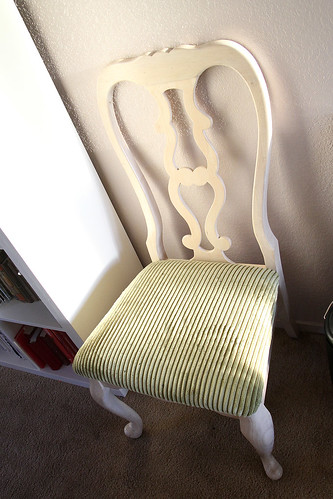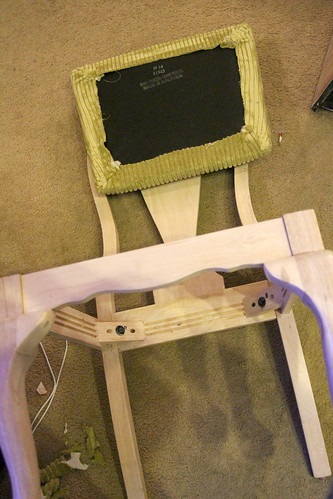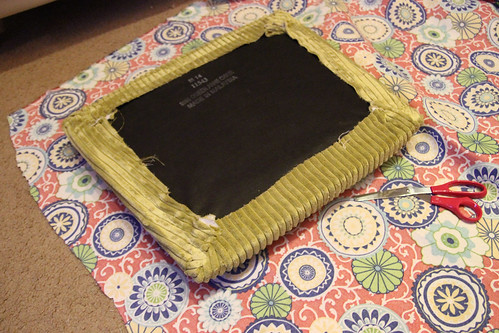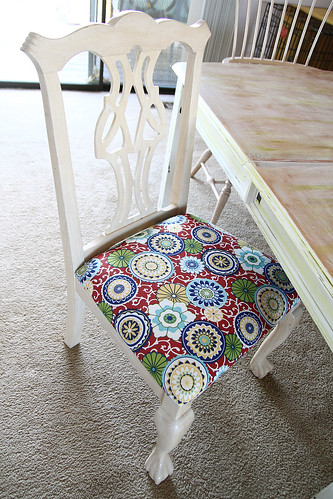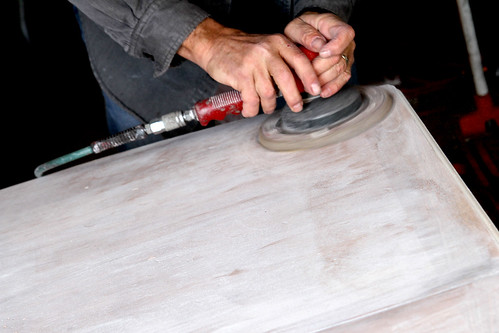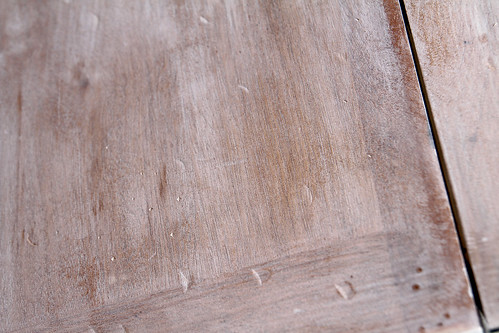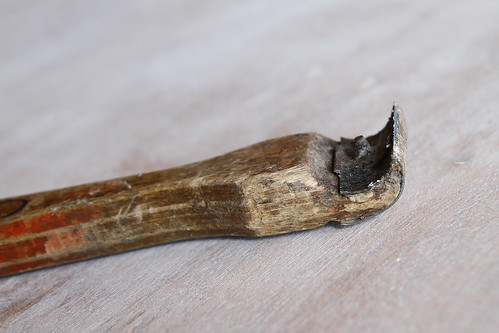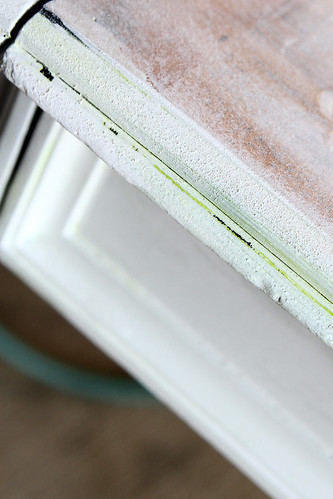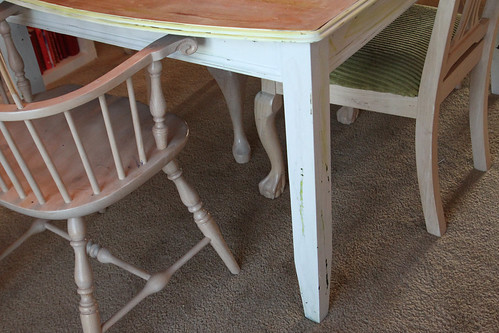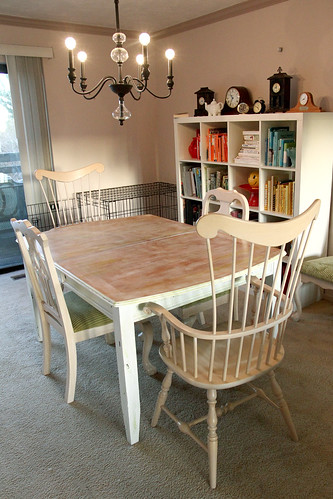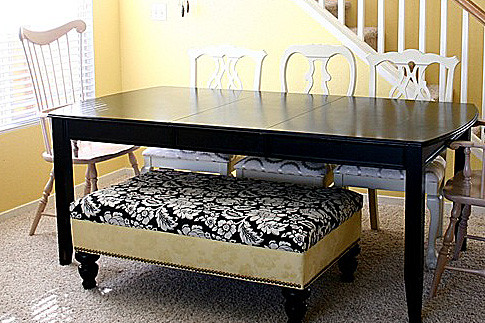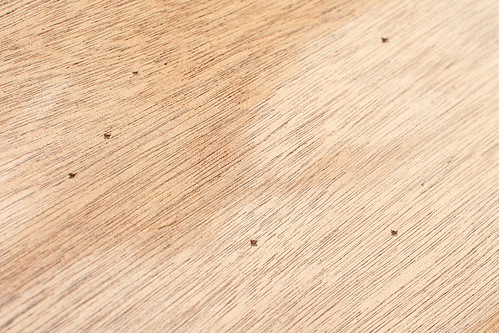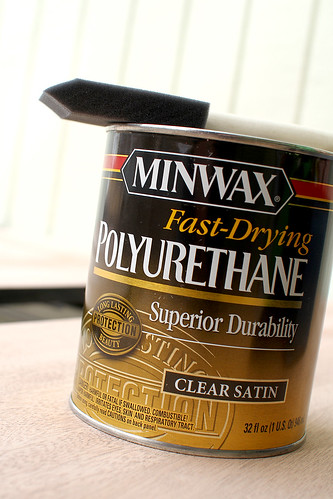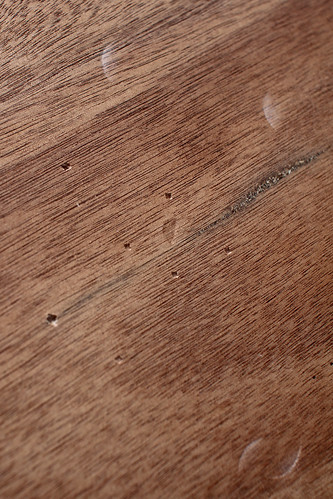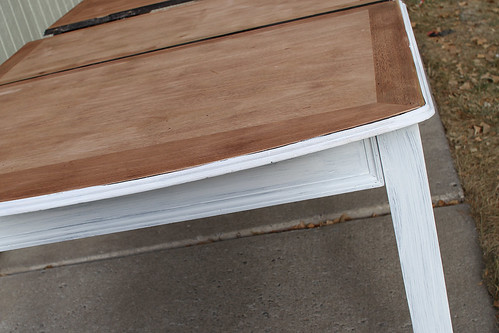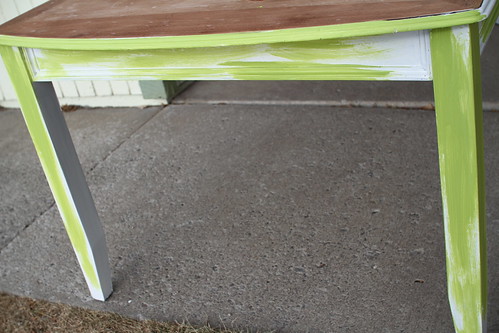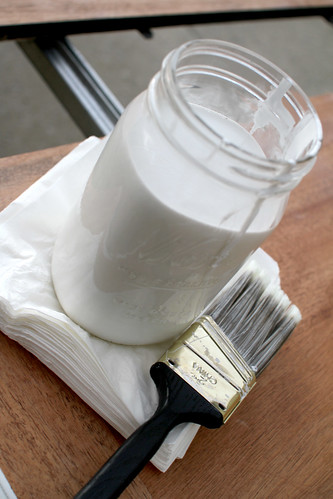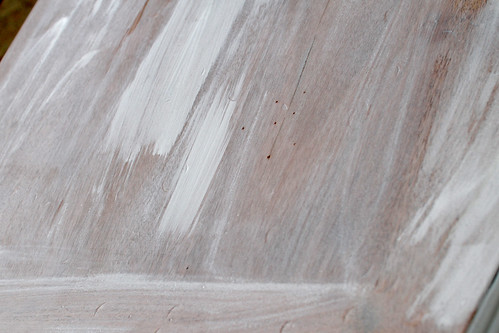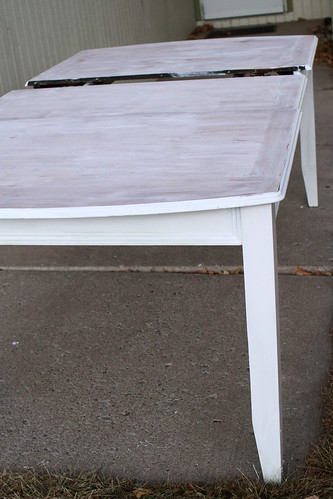Look up there! I've made up a word! A word that means "sometimes you can make wonderful things for much cheaper than you can buy them!"
I experimented in the BARGAINY creation of granola yesterday, after electing not to spend $3.50 for about 12 ounces of super plain granola. Since I have a tree nut allergy it's difficult for me to find granola I can eat, anyway, and making my own seemed like a logical leap.
So I purchased some ingredients, and decided I'd wing it.
I got:
1 large container of regular oats ($2.47)
Flake coconut ($1.72)
Wheat germ ($3.50)
and from the bulk bins:
Salted, roasted sunflower kernels (.84 lb for $1.60)
Soy nuts (.33 lb for $0.43)
Sesame seeds (.20 lb for $0.57)
Dried cranberries (.73 lb for $2.74)
And I already had on hand:
olive oil
brown sugar
maple syrup
honey
I'll calculate the actual cost of the granola a little later, since I didn't use all of each of the ingredients.
I did consult a few recipes before I jumped in, but I didn't follow any recipe to the letter.
First, I mixed up the dry ingredients. In my case it was oats, sesame seeds, sunflower seeds, soy nuts, coconut, and wheat germ.
What I deduced here is that ingredients, and even proportions here don't really matter. Add things you think you'd like to eat. Make it sweeter or less sweet depending on your preference. It's fun! :)
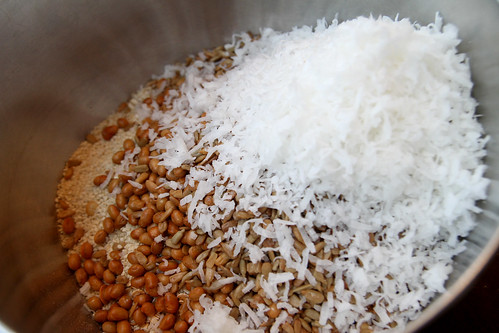
Nice and Mixy!
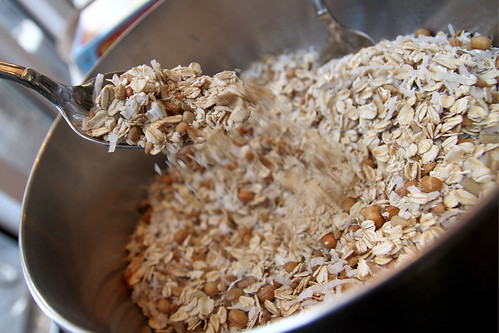
Now for the wet part. Or as my mom would call it "something to stick it together". Every meal needs to stick together. Didn't you know this? Well my mom knows it and utilizes this method!
In the sticky department I've used about 1/4-ish cup of olive oil, 1/2-ish cup of brown sugar and 1/4-ish cup of real maple syrup. I threw about a 1/2 teaspoon of salt in this step, too.
Again, I don't think that what you use here matters that much. You can skip the syrup if you don't have it or don't like it. You could use any kind of oil and any kind of sugar. Or no sugar if you're a lumberjack or something.
I mixed those up in a little bowl, kind of like I would do for a salad dressing.

See? Looks like dressing, right? Well, sort of.

Then, I drizzled the wet mixture over the dry mixture, thusly:
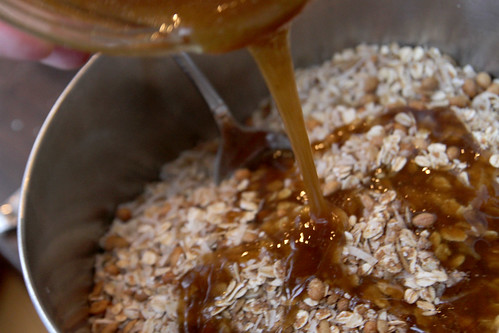
It covered the top pretty much completely.
Then just a little stirring and I came out with a concoction that kind of stuck to my spoon. The spoon sticking told me that my wet-to-dry ratio was working. If it seems to dry you can always drizzle a little more of something on there to get it where you want it.

Then I spread it out on a cookie sheet, or in my case, two cookie sheets. I made a mistake here, that I wouldn't fully understand until I was finished with the whole batch. See if you can figure it out before I tell you.
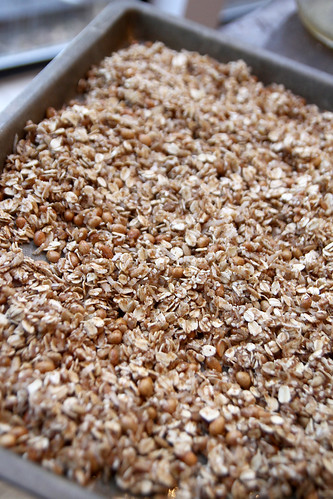
A little drizzle over the top of each pan with some honey
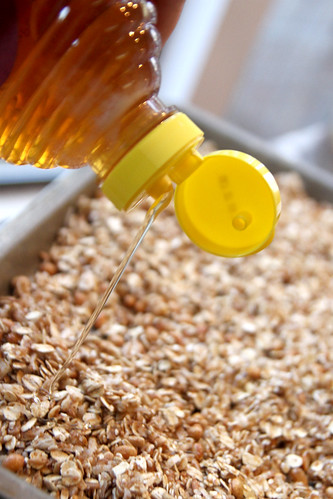
and then into the oven the pans went. The temp was set to 250 degrees.

(The two pans, that are not the same, and also are different)
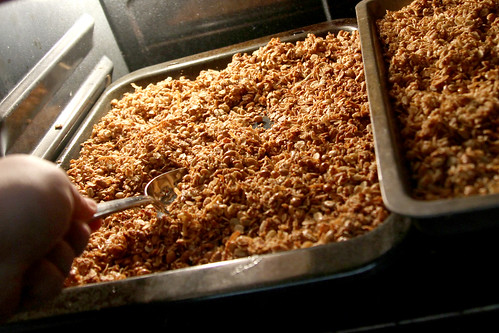
I set the timer for 15 minutes, every 15 minutes. When the timer beeped I stirred the granola and reset the timer. It was like a little dance I did.
Alton Brown's granola recipe recommended 1 hour and 15 minutes of baking, stirring every 15 minutes, so that's what I did.
When it was about ready, I took the two pans out and saw something I didn't see when they were in the funny colored oven light.
Looks like the darker pan I used cooked the granola a weence faster. One pan was a bit . . . shall we say . . . caramelized.
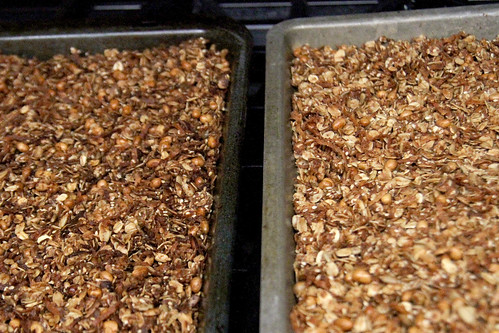
When we burn things in this family it takes a quorum of family members to decide what to do. So, as if there was nothing else to be done, the four of us stood around the stove top nibbling semi-burnt granola. We mostly agreed it still tasted ok. But we had to taste it some more.
And yeah, we definitely agreed, it's edible.
So I went ahead and mixed the two pans together, along with the dried cranberries I bought, and ta da! We have a finished product!
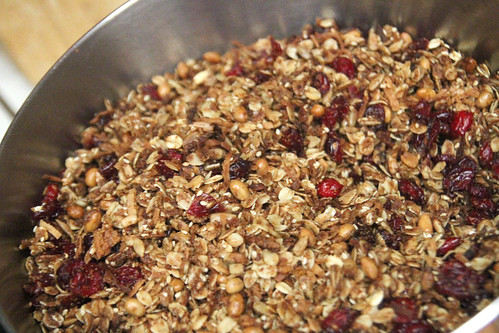
And just to be completely sure, my son and I decided we'd make a bowl with some milk, for a REAL taste test. It is quite tasty. Not too sweet, and the combination of soy nuts, sesame seeds and sunflower seeds almost tastes peanut buttery. Kind of yummy. Actually it might be really tasty with a few chocolate chips thrown in.
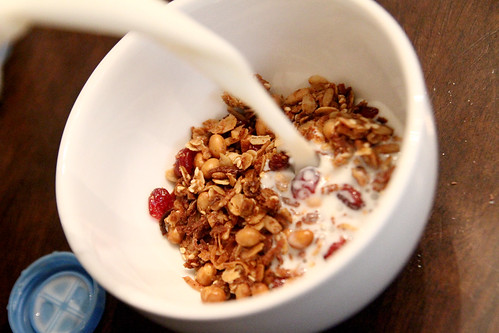
Ok, math time.
The tiny 12 ounce bag of granola I was going to purchase was $3.50. If you divide that out you get a per ounce price of about 29 cents.
So, was the home made cheaper?
Calculating approximate amounts of the ingredients I used, as well as approximate costs for the ingredients I already had on hand (about 1/4 of the oatmeal, all of the cranberries, just a couple tablespoons of wheat germ, and so on)
I've come up with a total price of $8.57 for my granola.
When it was all finished and bagged up, the bag weighed in at about 3 pounds.
My fancy math machine (calculator) tells me that's about 18 cents per ounce of granola.
But we should discuss something else.
The granola I was going to buy was the most basic of basic granolas. Simple oats and raisins, no nuts or added tasty bits at all. My granola is full of hearty goodness.
I most certainly could have made this cheaper as well, by narrowing the ingredients down a bit. I could have chosen coconut OR cranberries, for example.
And since I had such success making granola, I spent the whole day today canning my own beans. Sounds totally exciting, right?




